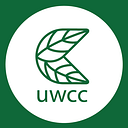Fairtrade Organization History, its Benefits and Certification Process
Researched by: Putri Cullinane, Caitlin Anne Furgal and Emily Truong
Created by: Hannah Li
History of Organization
Many fair-trade initiatives began throughout the 20th century and, over time, have grown into the extensive and reputable organizations we know today. There are currently three major Fairtrade networks in the world: the World Fair Trade Organization, Fairtrade International, and the European Fairtrade Association; each of these organizations has its own unique origins. In North America, the earliest fair trade initiative dates back to 1946, when a volunteer for the Mennonite Central Committee created the first bridge between small-scale workers and the global trading market. From Puerto Rico to the United States, Edna Ruth Byler brought back delicately sewn lace to be sold. Over time, this initiative grew into Ten Thousand Villages, which opened the world’s first fair trade store in 1958 and is still the largest Fairtrade retailer in North America. Oxfam UK began the first European initiative in the late 1950s and went on to form the world’s first official Fairtrade Organization in 1964.
From the 1960s to the 1980s, other fair-trade initiatives began popping up throughout North America and Europe, and people began to congregate at large conferences and conventions to foster relationships between different fair-trade organizations and develop standards for fair trade practices. Over time, many of these original organizations joined together and further developed to form the major umbrella networks active today.
Image © Philipp Benedikt
Objectives of Organization
Fairtrade is an initiative which it empowers small-scale farmers and agricultural workers in the free market, also known as a global trade system. Often, small-scale farmers struggle to get their products in the market due to various reasons such as poor yield due to bad weather, little influence on the pricing of products and more. Hence, small-scale farmers struggle to earn the money they deserve for their hard work. With Fairtrade, small-scale workers work with other small-scale workers in the area to benefit from a Fairtrade minimum price. Fairtrade aims to provide a stable income for workers to improve their living and working conditions. Moreover, Fairtrade puts emphasis on the importance of preserving natural habitats and climate as well. Products that are labelled Fairtrade have followed the requirements that were set by Fairtrade International.
Benefits of Fairtrade
For Buyers: Knowing that the workers of the products they purchased are treated fairly. Contribute to the improvement of working and living standards of small-scale workers
For Producers: Fairtrade minimum prices allow a stable flow of income for workers
Fairtrade premium — an amount of money sent to groups of producers where workers have entire control over how to spend the money. For example, for an upgrade in farming equipment, wells construction or even hospitals.
Image © CLAC
FairTrade Certification Process
Different certification levels
What type of products are being certified
How to get certified (Steps 1, step 2, etc. might be an easier format to follow?)
A wide variety of products can be Fairtrade certified, including grains, coffee, honey, fruits and vegetables, flowers and plants, textiles, sports balls, and even gold and other precious metals. Different certified Fairtrade marks apply to individual products (e.g., bananas, coffee) and composite products (e.g., cookies) where either some or all ingredients included come from certified Fairtrade producers.
There are two different types of organizations eligible for Fairtrade certification: producers, which can be individual farmers or larger farming organizations, and traders, the companies that buy and distribute the products from the producers.
Fairtrade uses independent audits, primarily performed by FLOCERT, to determine eligibility in the Fairtrade program and ensure all Fairtrade Standards, which include economic, social, and environmental components, are being followed. Certification cycles last for three years, during which additional audits are performed to ensure the organization is continuing to follow protocol.
There are a few differences between the certification procedures for producers and traders. Producers must first undergo an in-person audit where the auditor thoroughly examines the production site and work practices for compliance with Fairtrade Standards. It is only after this audit is complete and the organization has been approved that it can be considered Fairtrade certified. Traders, on the other hand, can receive temporary permission to trade for 9 months, and the first audit will occur within this time period to analyze how well the trader is complying with Fairtrade Standards.
Notable Facts
Over 3000 organizations are involved in fair trade initiatives worldwide under the three major Fairtrade networks, and more than 1700 producer organizations and 1.9 million farmers and workers benefit from the Fairtrade system under Fairtrade International
Producers are located throughout the global south, spread across Central and South America, Africa, Asia and the Pacific
Auditors that are responsible for certifying organizations are almost always locally based and extremely familiar with the cultures, languages, and specific laws and regulations of the regions in which they operate
The Fairtrade Climate Standard allows producers to receive carbon credits for participating in local projects like reforestation or investing in energy-efficient equipment. Producers receive the funds from the sale of credits as well as an additional Fairtrade premium.
Looking for ethically produced clothing? The World Fair Trade Organization hosts a list of 60 certified fair trade clothing retailers across the world on its website: https://wfto.com/fashion/Clothes.html#header2-y
Sources:
https://www.fairtrade.net/about
https://www.fairtradefederation.org/resources/a-brief-history-of-fair-trade/
https://www.fairtrade.net/about/how-fairtrade-works
https://www.fairtrade.net/about/certification
https://www.fairtrade.net/about/products-and-ingredients
https://www.fairtrade.org.uk/media-centre/blog/25-facts-about-fairtrade/
https://www.fairtradefederation.org/resources/a-brief-history-of-fair-trade/
